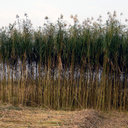Application of visible and near-infrared spectroscopy to classification of Miscanthus species.
کلید واژه ها
خلاصه
The feasibility of visible and near infrared (NIR) spectroscopy as tool to classify Miscanthus samples was explored in this study. Three types of Miscanthus plants, namely, M. sinensis, M. sacchariflorus and M. fIoridulus, were analyzed using a NIR spectrophotometer. Several classification models based on the NIR spectra data were developed using line discriminated analysis (LDA), partial least squares (PLS), least squares support vector machine regression (LSSVR), radial basis function (RBF) and neural network (NN). The principal component analysis (PCA) presented rough classification with overlapping samples, while the models of Line_LSSVR, RBF_LSSVR and RBF_NN presented almost same calibration and validation results. Due to the higher speed of Line_LSSVR than RBF_LSSVR and RBF_NN, we selected the line_LSSVR model as a representative. In our study, the model based on line_LSSVR showed higher accuracy than LDA and PLS models. The total correct classification rates of 87.79 and 96.51% were observed based on LDA and PLS model in the testing set, respectively, while the line_LSSVR showed 99.42% of total correct classification rate. Meanwhile, the lin_LSSVR model in the testing set showed correct classification rate of 100, 100 and 96.77% for M. sinensis, M. sacchariflorus and M. fIoridulus, respectively. The lin_LSSVR model assigned 99.42% of samples to the right groups, except one M. fIoridulus sample. The results demonstrated that NIR spectra combined with a preliminary morphological classification could be an effective and reliable procedure for the classification of Miscanthus species.




